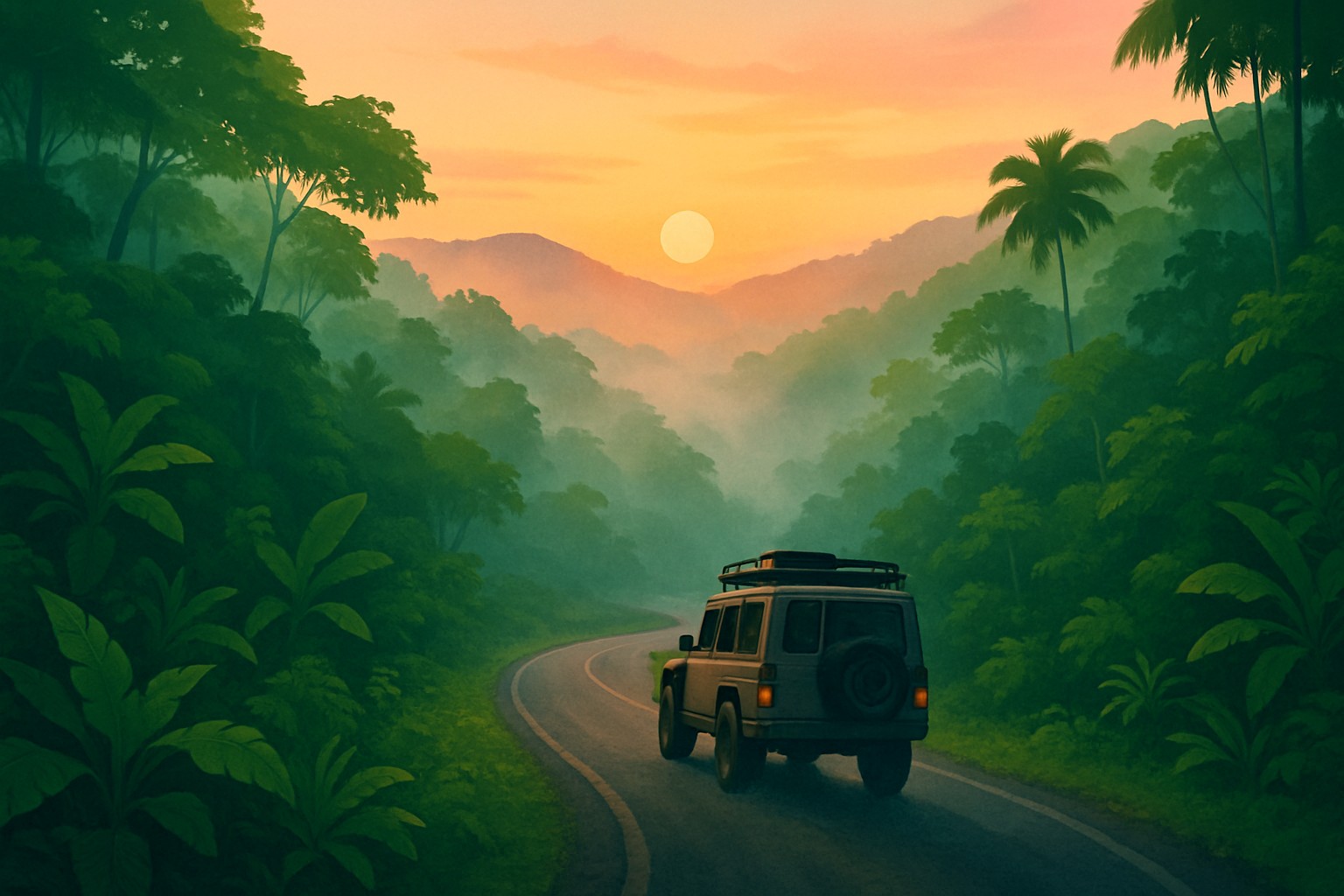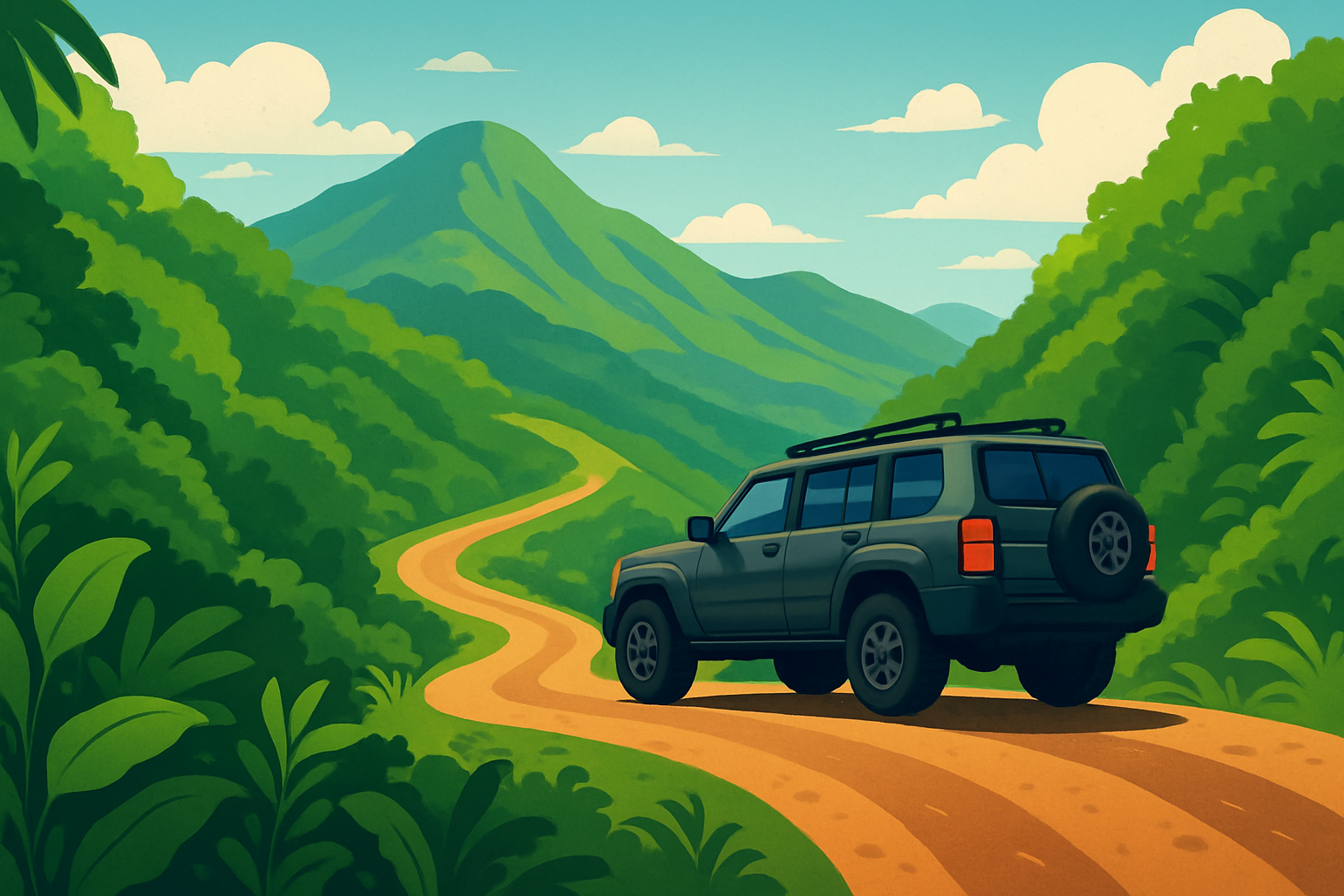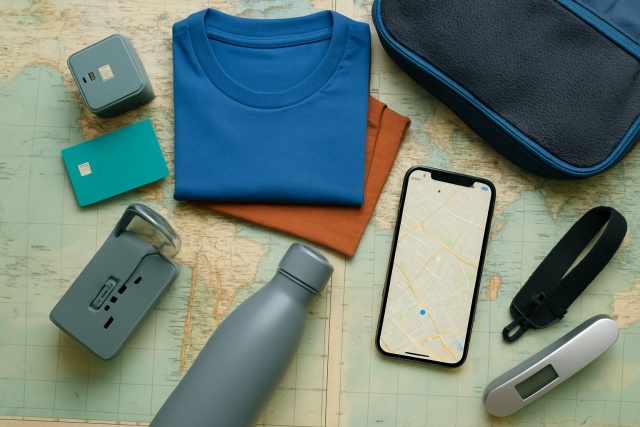Cars in Costa Rica That Handle Mountain Roads Best

Think of this guide as your trusty co-pilot helping you pick and drive the perfect vehicle so you can confidently conquer Costa Rica’s demanding mountain roads without breaking a sweat.
- Dive into key vehicle features like all-wheel drive and generous ground clearance—both vital for keeping you safe when mountain roads get unruly.
- Discover which car models from nimble compact SUVs to rugged 4x4s are up to the challenge of Costa Rica's wildly diverse terrain.
- Grab handy tips on renting a car including the must-do checklist before you hit the road and insurance questions you do not want to skip.
- Master essential driving skills for tackling steep twisty roads and learn how to stay prepared for sudden weather curveballs that mountain driving throws your way.
Driving through Costa Rica's mountainous areas is quite the adventure—exciting but definitely not an easy ride for travelers. With steep slopes, twisty roads and unpredictable weather, mountain driving requires careful preparation and the right set of wheels to keep you safe, comfortable and steady. Choosing a car that can handle the challenge is more than just a nice-to-have. It is absolutely essential because the wrong vehicle can easily mess with your control, tire you out faster than you would expect and increase the risk of accidents.
Costa Rica's landscape is dotted with volcanic mountain ranges that stretch across the country, presenting a mix of terrains that keep things interesting.
Taking a Closer Look at Those Winding Mountain Roads in Costa Rica
Mountain roads in Costa Rica can be quite the mixed bag when it comes to quality and difficulty. Many of these roads are narrow and twisty, winding through the landscape with surfaces that can switch from smooth paved highways to bumpy rough dirt trails before you know it. Weather plays its own game here by often throwing a wrench in the works with sudden rain or thick fog that can seriously mess with traction. The changes in elevation don’t just keep things interesting. They can sap your engine power and make you rely heavily on solid brakes. Drivers often find themselves tackling steep climbs and sharp turns and occasionally dealing with unexpected obstacles like fallen rocks or animals crossing the road.
- Paved mountain highways connect the major cities and towns, making travel smoother and more predictable
- Gravel roads provide access to rural villages and natural parks. They often have a bit of bumpiness that adds to the adventure
- Dirt tracks are your go-to for off-the-beaten-path escapades. They are perfect if you’re craving something a little wild and less traveled
- Steep gradients around here mean you’ll want a vehicle with strong torque and reliable brakes. Safety is not the time to cut corners
- Narrow roads have limited space for passing and feature some sharp corners, so patience and precision are essential
- Sharp curves require careful handling and focused attention from the driver since it’s not the place to let your mind wander
Different types of roads call for particular driving techniques and vehicle features as anyone who is spent time behind the wheel knows. On paved roads having dependable traction and stability is key especially when you are tackling sharp turns that make your head and heart race. Gravel and dirt roads demand better ground clearance and a tough suspension to handle bumpy unpredictable terrain. When climbing or descending steep slopes your engine and brakes get put to the test. Handy features like hill descent control often become absolute lifesavers.
Important Features to Keep in Mind When Picking a Car for Mountain Driving in Costa Rica
Some vehicle features truly shine when it comes to ramping up safety and performance on those twisty mountain roads. Drivetrains like 4WD or AWD usually deliver better grip on loose or slippery surfaces, which can be a lifesaver. And let us not forget about higher ground clearance—it’s like giving your car a bit of extra legroom to avoid scraping the undercarriage on all those uneven bumps. Advanced traction and braking controls work behind the scenes to keep your ride steady, especially when you’re tackling steep climbs or descents.
- Four-wheel drive (4WD) or all-wheel drive (AWD) gives you extra grip when the road gets slippery or the ground turns loose—like having sticky shoes in a muddy puddle
- High ground clearance lets you roll over rocks and rough patches without breaking a sweat
- Hill descent control is your best buddy on steep slopes and helps you keep a steady pace without foot on the brake
- Strong engine torque provides the muscle needed to conquer hills smoothly with no jerky stops or sputters
- Durable suspension systems absorb bumps and shocks from uneven terrain, making the ride more comfortable than you’d expect
- Reliable and responsive brakes have your back during sudden stops so you can breathe easier
- Fuel efficiency tuned for mountain driving saves you from too many pit stops and lets you focus more on the view and less on the pump
Costa Rica's mountain areas are quite the mixed bag—diverse and sometimes unpredictable—so these features help keep accidents and mechanical hiccups to a minimum. Traction and braking controls handle slippery rain-soaked roads like a pro. Meanwhile, higher ground clearance and a sturdy suspension work overtime to shield the vehicle from rocks, potholes and rough terrain outside the city limits.
Leading Car Models Commonly Recommended for Tackling Costa Rican Mountain Roads
A handful of car models truly shine when it comes to tackling mountain roads and you’ll often spot them in Costa Rica’s rental and sales markets. These vehicles strike a neat balance between power, reliability and comfort making them favorites among both seasoned locals and curious visitors alike. Whether it’s compact SUVs that glide effortlessly from busy city streets to rugged trails or tough 4x4s built to handle remote terrain that makes you hold your breath.
| Car Model | Drivetrain | Ground Clearance (in) | Engine Power (hp) | Fuel Type | Rental Availability | Typical Use-Case Suitability |
|---|---|---|---|---|---|---|
| Toyota RAV4 | AWD | 8.4 | 203 | Gasoline | Widely Available | A compact SUV that handles light to moderate trails like a champ, perfect for weekend adventures without breaking a sweat |
| Jeep Renegade | AWD | 8.3 | 180 | Gasoline | Common | Built to tackle city streets and gravel roads with ease—great for those who want a bit of flair on urban outings |
| Toyota Land Cruiser | 4WD | 8.9 | 381 | Diesel | Limited | Tough as nails, this beast is meant for serious off-road challenges and those gnarly mountain climbs you only dream about |
| Ford Bronco | 4WD | 11.6 | 300-350 | Gasoline | Select Rental Shops | Your go-to for extreme off-roading—handles rugged conditions like it’s no big deal, though you might want to hold on tight |
| Toyota Hilux | 4WD | 9.1 | 201 | Diesel | Available | A reliable pickup that’s more than happy to haul your gear and conquer rough terrain without fuss |
| Subaru Forester | AWD | 8.7 | 182 | Gasoline | Available | Steadfast and dependable, this one’s great for zipping between paved roads and dirt paths without a hiccup |
| Nissan X-Trail | AWD | 8.5 | 170 | Gasoline | Available | A versatile ride that’s up for mountain drives and scenic tours alike—solid choice when you want a bit of everything |
The Toyota RAV4 hits a sweet spot between power and fuel efficiency, making it a great companion for individuals who cruise smooth highways and light off-road trails. Drivers often praise its surprisingly nimble handling on gnarly gravel climbs and appreciate the steady grip when a sudden rain shower comes. The Jeep Renegade really shines with quick responsive steering and capable AWD systems. It is just as at home on twisty mountain roads as it is darting through city streets. The Toyota Land Cruiser and Ford Bronco bring serious off-road muscle to the table. They easily chew up rocky unpaved terrain while staying tough and dependable. For those who need to haul a ton of gear without breaking a sweat, the Toyota Hilux pairs rugged reliability with high ground clearance. It is a favorite for challenging mountain trails and earns a steady stream of appreciative nods for its stamina on long adventures. Meanwhile the Subaru Forester and Nissan X-Trail deliver smooth comfortable rides with AWD setups you can count on, handling mixed terrains with ease.
Small SUVs and Crossovers The Perfect Mix of Style and Practicality
Compact SUVs like the Toyota RAV4 and Jeep Renegade often turn out to be a solid pick for travelers who appreciate easy handling and decent fuel efficiency on Costa Rica's mountain roads. Their all-wheel-drive systems help them stick to slippery terrain and their smaller size helps when weaving through narrow winding paths.
Full-Size SUVs and Four-Wheel Drives The Big Players on and off the Road
When it comes to tackling tougher mountain travel, full-size SUVs like the Toyota Land Cruiser and Ford Bronco really shine. They bring serious power and stability to the table, which is a lifesaver on challenging terrain. Thanks to their rugged 4WD systems and extra ground clearance, along with durable suspensions, they can confidently take on steep slopes, rocky trails and off-road scenarios that would leave smaller vehicles struggling to keep up.
A Closer Look at Pickups and Utility Vehicles
Pickups like the Toyota Hilux strike a great balance between tough durability and plenty of cargo space making them a natural fit for mountain travel where hauling gear or supplies is essential. Thanks to their rugged 4WD system and generous ground clearance they handle steep rough mountain roads with confidence.
Tips for Renting Cars That Actually Handle Those Mountain Roads in Costa Rica Like a Pro
When renting a car for mountain driving in Costa Rica, keep a few key things firmly in mind. You’ll want a ride that’s built for the bumps and twists, so make sure it comes with features like AWD or 4WD and plenty of ground clearance to boot. Don’t rush the inspection—give those tires and brakes a close once-over, as they’ll be your best friends on rough terrain. Also, getting a solid grip on what the insurance actually covers for those rugged roads can save you some headaches down the line. And while you’re at it, don’t shy away from asking about roadside assistance—it’s the kind of peace of mind that’s worth its weight in gold. Finally, clearing up any confusion around geographic restrictions and hashing out clear rental terms now will keep your trip running smooth and hassle-free.
- Opt for cars equipped with AWD or 4WD, as these really help keep your grip on the road when surfaces get tricky.
- Double-check that the vehicle’s ground clearance can handle those rocky dirt and gravel roads you’ll find up in the mountains because nobody wants to be scraping the undercarriage.
- Give the tires and brakes a good once-over since staying on top of these can save you from a world of mechanical headaches.
- Dive into your insurance policy so you’re crystal clear on what’s covered when you’re off the beaten path or climbing those mountainous stretches.
- Don’t be shy about asking to include roadside assistance because having that safety net in remote areas is worth its weight in gold.
- Last but not least, double-check the rental company’s rules about driving in mountain or off-the-grid spots to steer clear of any surprise fees or penalties.
Key Tips for Tackling Those Mountain Roads in Costa Rica
Driving safely in Costa Rica’s mountainous areas calls for a few extra tricks beyond the usual driving habits. It’s a good idea to keep your speed in check especially when navigating twisty curves and downhill stretches. Using lower gears to control your momentum really pays off and giving fellow drivers plenty of space can reduce the risk of accidents. Keep your eyes peeled for sudden weather changes, wildlife darting across the road and slippery unstable edges—it’s all part of the mountain driving dance.
- Use lower gears to keep your speed in check on steep downhill stretches instead of relying too much on the brakes because they can overheat faster than you would like.
- Keep a safe distance from the vehicle ahead so you have plenty of time to react, especially on twisty roads that keep you on your toes.
- Avoid sudden braking or quick acceleration since these moves can upset your vehicle's balance faster than you might expect.
- Stay alert for landslides, fallen rocks and local wildlife that often make surprise appearances on the road.
- Stick to driving during daylight hours when visibility and road awareness are better because nighttime driving can be more challenging.
- When you are on narrow roads, slow down and do not hesitate to use turnouts to let other vehicles pass safely. It is all about keeping the peace out there.
Mountain roads in Costa Rica often look absolutely stunning, though they can throw a few curveballs your way. It is really important to respect the terrain, take it slow, and double-check that your ride is up to the challenge before you set off. Taking these tips to heart saved me from more than a handful of tricky situations during my travels. – José Martinez, local expert driver

SUV expertly handling a winding mountain road amidst Costa Rica’s lush mountain landscape
Maintenance and Emergency Equipment You Should Definitely Have When Hitting the Mountain Roads
Before setting off on mountain routes in Costa Rica, it is a good idea to give your vehicle a thorough once-over with key maintenance checks and pack some emergency gear just in case. Keeping your car’s mechanical bits in tip-top shape can save you from those dreaded breakdown moments, and having the right equipment at hand means you’re a lot better prepared for whatever curveballs the road might throw your way.
- Check your tire pressure and tread depth regularly to keep good traction and lower the chances of flat tires sneaking up on you
- Give your brake pads and fluid a good once-over to keep your stopping power rock solid when you need it most
- Keep an eye on engine oil and coolant levels to help avoid overheating. Trust me, it’s one headache you want to avoid
- Test the battery’s condition so your car starts smoothly every time with no unexpected morning surprises
- Pack a well-stocked first aid kit for those little mishaps that seem to happen at the worst moments
- Bring a strong flashlight plus spare batteries. Nighttime emergencies are easier to handle when you can see what you’re doing
- Don’t forget a tire repair kit, jumper cables, plenty of water and some basic tools to tackle whatever unexpected curveballs the road might throw your way
Being well-prepared not only lowers the odds of running into trouble but also helps you handle any hiccups quickly when they happen. This is especially true for cars in Costa Rica, where keeping your brakes and tires in top shape makes navigating the twists and turns of mountain driving much less daunting. Carrying a few emergency essentials like a reliable first aid kit and a flashlight ensures you won’t be caught off guard by injuries or unexpected surprises. It is also wise to bring some tools and water, especially in remote areas where help might take a long time to arrive.




